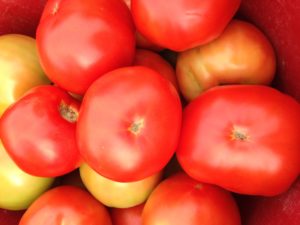Garden Update – July
go.ncsu.edu/readext?715218
en Español / em Português
El inglés es el idioma de control de esta página. En la medida en que haya algún conflicto entre la traducción al inglés y la traducción, el inglés prevalece.
Al hacer clic en el enlace de traducción se activa un servicio de traducción gratuito para convertir la página al español. Al igual que con cualquier traducción por Internet, la conversión no es sensible al contexto y puede que no traduzca el texto en su significado original. NC State Extension no garantiza la exactitud del texto traducido. Por favor, tenga en cuenta que algunas aplicaciones y/o servicios pueden no funcionar como se espera cuando se traducen.
Português
Inglês é o idioma de controle desta página. Na medida que haja algum conflito entre o texto original em Inglês e a tradução, o Inglês prevalece.
Ao clicar no link de tradução, um serviço gratuito de tradução será ativado para converter a página para o Português. Como em qualquer tradução pela internet, a conversão não é sensivel ao contexto e pode não ocorrer a tradução para o significado orginal. O serviço de Extensão da Carolina do Norte (NC State Extension) não garante a exatidão do texto traduzido. Por favor, observe que algumas funções ou serviços podem não funcionar como esperado após a tradução.
English
English is the controlling language of this page. To the extent there is any conflict between the English text and the translation, English controls.
Clicking on the translation link activates a free translation service to convert the page to Spanish. As with any Internet translation, the conversion is not context-sensitive and may not translate the text to its original meaning. NC State Extension does not guarantee the accuracy of the translated text. Please note that some applications and/or services may not function as expected when translated.
Collapse ▲Plants in Flower
Trumpet Creeper, Phlox, Butterfly Weed, Daylily, Red Hot Poker, Rose-of-Sharon, Sourwood, Crape myrtle, Stewartia, St. John’s Wort, Abelia, Peegee Hydrangea, Chaste-Tree, Canna, Dahlia, Shasta Daisy, and summer annuals.
What to Fertilize
- Continue side dressing your garden vegetables.
- July is the month we recommend giving landscape plants a second (last) feeding of fertilizer.
- Take soil samples from your lawn areas for testing. Soil boxes are available at the N.C. Cooperative Extension, Henderson County Center.

What to Plant
- Plants of Brussel sprouts and collards can be set out in mid-July.
- You can begin your fall vegetable garden this month.
- Plant beans, carrots, Brussels sprouts, and tomatoes in July.
- Start broccoli, cabbage and cauliflower plants in peat pots to transplant into the vegetable garden in mid-August.
- Begin repotting overgrown houseplants.
What to Prune
- Prune “bleeder” trees like maple, dogwood, birch, and elm this month.
- Prune the fruiting canes of raspberry and blackberry plants after harvest is over. Cut canes at ground level.
- Prune off dieback limbs on hybrid rhododendron, azalea, mountain laurel, and blueberry. Trim hedges as needed.
- Continue pruning white pines and narrowleaf evergreens like juniper early in the month.
- Remove faded flowers on flowering perennials to encourage a second flowering.
- Complete pruning of spring-flowering shrubs by July 10.
Pest Outlook
- Scout the following landscape shrubs for the following insect pests: arborvitae (bagworms), azalea, and pyracantha (lace bug).
- Use Neem Oil for Japanese beetles as needed.
- Spray your tree fruits and bunch grapes on a regular basis.
- Scout the following vegetables for insects: cucumber (cucumber beetle), squash (aphids), tomato, and eggplant (flea beetle).
- Woody weeds like poison ivy, honeysuckle, and kudzu can be controlled with a recommended herbicide.
Lawn Care
- Remember to change direction when mowing your lawn. Travel north to south on one mowing and east to west on the next cutting.
- Continue feeding your zoysia lawn with fertilizer.
- Do NOT give tall fescue or bluegrass lawns any fertilizer this month. Maintain 3″ mowing height on tall fescue and bluegrass lawns.
Propagation
- This month is still a great time to take semi-hardwood cuttings of azaleas, holly, rhododendron, and many other shrubs.
- July is an ideal time to divide and transplant your iris and daylilies.
Specific Chores
- July is a good month to see if and where your home can use some additional shade trees.
- Blossom-end rot may be seen on tomatoes this month. Two factors – too little water and too little lime in the soil – may be the reason.
- In dry weather, both your vegetable garden and landscape plants will benefit from a good soaking watering. Slow watering will penetrate the root zone better. Apply 1″ of water early in the day.
- Purchase locally grown blueberries and blackberries.




